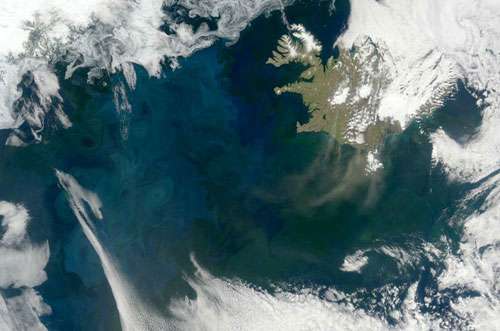Diatom algae populations tell a story about climate change in Greenland (w/ Video)

Researchers try to determine how much this "canary in a coal mine" can say about the impact of a warming climate on the Arctic region.
With support from the National Science Foundation (NSF), lake ecologist Jasmine Saros and her team from the University of Maine are plying the lake waters of southwestern Greenland, gathering samples of "diatoms" to study how climate change is affecting this Arctic ecosystem. Diatoms are a type of algae that responds rapidly to environmental change and leaves a fossil in lake sediments.
Striking changes in communities of diatoms have occurred over the last 150 years. Diatom species generally associated with warmer conditions are increasing at unprecedented rates in the sediment record.
However, changes in diatom assemblages in lake sediments from west Greenland are different from those in the rest of the Arctic in that they are already rich in these 'warmer' water diatoms throughout the Holocene (the last 11,700 years of geologic time). This difference has raised questions about what diatoms can tell us about environmental change in the Arctic, and suggests the need to clarify the ecological traits of diatoms in order to advance our understanding of drivers of change.
Recent research in alpine regions reveals that key diatom species that are used as indicators of 20th century warming in both arctic and alpine lakes respond specifically to both climate-induced changes in energy (mixing depths) and mass inputs (nutrients) to lake ecosystems. This suggests that spatially- and temporally-variable interactions between climate-induced changes in the physical and chemical structure of lakes may drive diatom community changes, but this is currently untested in arctic lakes.
This research couples comparative lake sampling with both small- and large-scale experiments to provide key ecological information that will enable interpretation of climate-induced ecological changes from several existing diatom records from southwest Greenland. The objective of this project is to determine the effects of climate-driven changes in nutrients and water column stability on the relative abundances of key diatom species, and to apply that information to existing diatom records to determine climate-induced changes in these lake ecosystems.
Provided by National Science Foundation


















